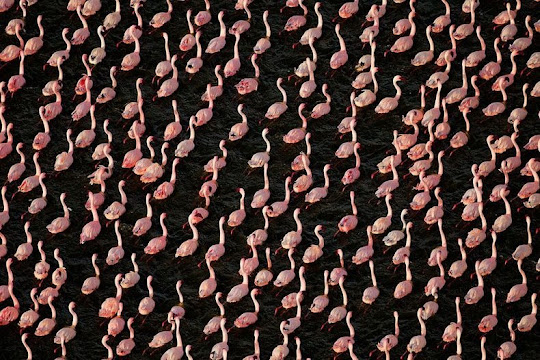The Lesser flamingo can be distinguished by its deep red carmine bill and pink plumage unlike the greater, which has a bill with a black tip. The Lesser flamingos are ones that are commonly pictured in documentaries mainly because they are large in number. The flamingos feed on algae, created from their droppings mixing in the warm alkaline waters, and plankton. Scientists reckon that the flamingo population at Nakuru, which is often more than a million - or even two million, consumes about 250,000 kg of algae per hectare of surface area per year.

Recently, the number of Flamingos has been decreasing perhaps due to too much tourism, pollution resulting from industries waterworks nearby who dump waste into the waters or simply because of changes in water quality which makes the lake temporarily inhospitable. Usually, the lake recedes during the dry season and floods during the wet season. In recent years, there have been wide variations between the dry and wet seasons' water levels. It is suspected that this is caused by increasing watershed land conversion to intensive crop production and urbanization, both which reduce the capacity of soils to absorb water, recharge groundwaters and thus increase seasonal flooding. Pollution and drought destroy the flamingos' food, Cyanobacteria, or blue-green algae, and causing them to migrate to the nearby Lakes, more recently lakes Elmenteita, Simbi Nyaima and Bogoria.
These pictures were captured by seasoned wildlife photographer Martin Harvey.
















Source
